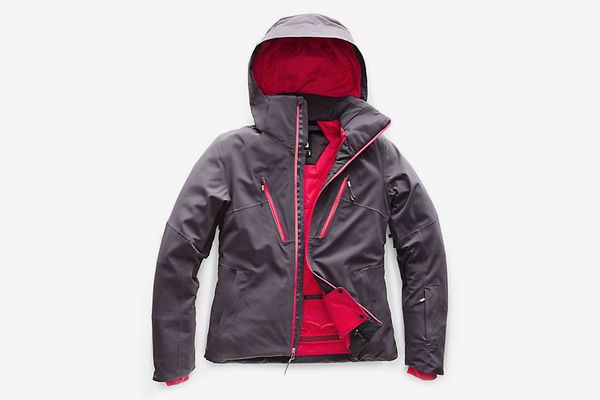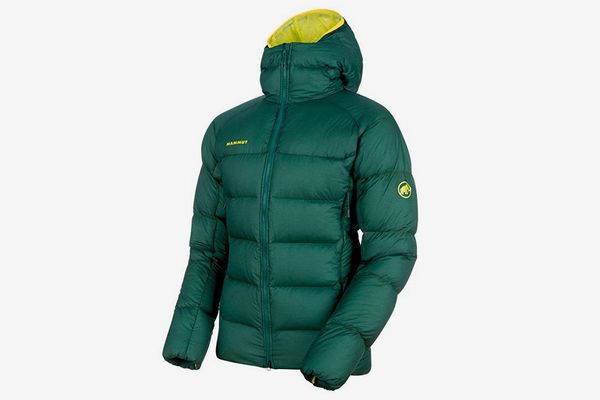
Whether you’re buying your first ski jacket, or replacing one you’ve had for a decade (and are baffled by all the new options), the purchase can be overwhelming. While high-end jackets can cost hundreds of dollars or more, experts agree that it’s possible to find a reasonably priced version that fits all your needs. “It’s important to not overpay for gimmicky features and buy into marketing language for a product you’ll hardly have use for,” says skier and snowboarder Daniel Kenney, who is also the public relations and communications manager at upstate New York’s Hunter Mountain.
To find out what skiers of all levels should actually look for in a jacket, we consulted three experts who shared their favorites — and the features they think are essential. A quick note on choosing a jacket color: Those neon-clad skiers of ‘80s movies fame may have been onto something. Skiers we spoke with say a bright color can be a safety feature on the mountain as it makes you easier to spot.
Best for beginner skiers
Most experts agree that the main features to look for in a jacket are waterproofing, breathability, and warmth. Beginners especially need not look far beyond these three factors when buying a functional jacket. “Burton and Patagonia are especially good at offering jackets at a range of price points, making things more affordable for folks who are just getting started on the slopes,” says Chris French, founder and president of NYC-based Ski Bums, the world’s largest LGBTQ skiing and snowboarding club. In the $200 range, Burton’s entry-level jacket has a waterproof layer to keep you dry and insulation for warmth. Tip for beginners: Make sure you can unzip your jacket and its pockets with your gloves or mittens on.
Beginners are often concerned about staying warm, a valid concern since they won’t be moving around as much as advanced skiers taking on moguls or technical slopes. However, because temperature can vary on the mountain — and you’ll eventually be doing more active skiing — experts advise focusing on base layers for additional warmth and thinking of your jacket as a shield against the elements.
A jacket like the Burton one above is fine for low-altitude skiing (think resorts in the Northeast) where there isn’t much temperature variation between the base of the mountain and the top. But French says this changes when skiing at high altitude (like out in the Rockies): “You’ll want two layers. First, choose a non-insulated, breathable shell with zip-vents that allow you to cool off when you’re at the base. Underneath that, you’ll pair it with an insulating layer that’s appropriate for whatever the mountain is serving up that day.” If you’ll be skiing in this terrain, consider a shell jacket with a removable layer of insulation. It’ll be pricier than a single-layer jacket but functional in a wider temperature range.
Best for intermediate skiers
As your skiing becomes more athletic, you’ll need to think about staying cool just as much as staying warm. Even if it’s freezing out, you can work up a sweat while skiing and you’ll want a jacket that doesn’t leave you damp and clammy. “Skiing and snowboarding are both incredibly active and unique sports which athletes can benefit greatly from by being sufficiently warm, protected from the elements, and able to cool off quickly if overheated,” says Kenney. “Having sealed armpit zipper vents, just the right amount of pockets, [and] Velcro wrist cuffs are the basic checklist of features for my jacket of choice.” He likes that this insulated North Face jacket uses waterproof, yet breathable, Gore-Tex material for quick-drying protection from the elements.
After the North Face option above, Kenney says this would be his “next jacket of choice.” If you’re gaining confidence skiing in powder — the fresh, fluffy snow that can reach up to your knees or waist — this would be a good jacket to try. Both the men’s and women’s versions feature a “powder skirt,” an elasticized piece of material that fastens around the hips to ensure snow won’t sneak under your jacket or in between your jacket and snow pants.
French says that Mammut is among brands like Arc’teryx, Spyder, and Mountain Hardwear that “offer supremely high quality, with durable materials that are designed to last for years.” This hooded jacket — the hood will fit over your helmet — is filled with airy, compressible down that packs on warmth without weight. It’s one of his midrange favorites for especially cold days.
Best for advanced skiers
Yes, it’s nearly $1,000, but if you’re a serious skier looking to make an investment in a jacket, this Arc’teryx option is a worthy contender. It’s both lightweight and warm thanks to its goose-down filling and bonded seams to keep water and wind out even on tough, backcountry days. “It performs incredibly well as an athletic jacket, yet keeps me toasty warm even when I’m skiing on a cold, deep-powder day,” says French.
Skiers heading off marked trails and into the backcountry need heavy-duty jackets to handle their adventures. “I don’t have the option of going in to get warm in the middle of the day,” says Marty Schaffer, founder of British Columbia backcountry touring company Capow. “With heavy precipitation and wind I need something that cuts the elements. We’re also moving in our jackets and need air to escape.” Schaffer says he’s a big fan of this Patagonia jacket designed for powder and wet snow. “I like the longer cut and it’s super light,” he says. The helmet-covering hood provides more protection during snowstorms and the underarm vents open up to let hot air escape.
As a certified ski guide Schaffer spends around 140 days each year in the mountains, so it make sense that outdoor gear brand Trew called on him to help design the perfect backcountry jacket. A collaboration with Capow, it’s stretchy enough for active skiers to move around in and has reinforced waterproofing in areas like the shoulders that tend to get the wettest.
The Strategist is designed to surface the most useful, expert recommendations for things to buy across the vast e-commerce landscape. Some of our latest conquests include the best acne treatments, rolling luggage, pillows for side sleepers, natural anxiety remedies, and bath towels. We update links when possible, but note that deals can expire and all prices are subject to change.
Every editorial product is independently selected. If you buy something through our links, New York may earn an affiliate commission.





















